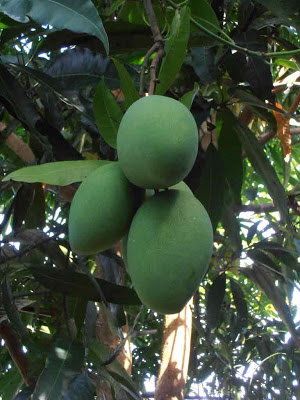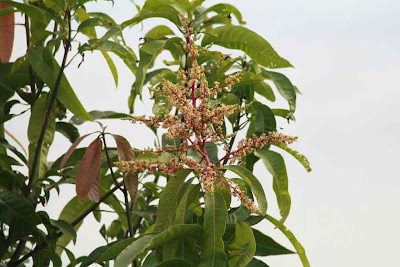Mango Fruit Tree
One of the oldest known fruit trees cultivated by man, the mango tree (Mangifera indica) originated from India and Southeast Asia, where it has been planted for over 4000 years mainly for its fruit. Crossings between various individual trees have produce hundreds if not thousands of mango cultivars. Each mango cultivar has its own smell, taste, size and time of maturity, among other characteristics.
 |
| Mango fruit |
In Thailand, cultivars are classified as either that that is eaten ripe or unripe. The former includes Rad, and the latter includes Okrong which is very sweet, juicy and greenish-yellow in colour. In India, one of the most popular mango cultivars is the Neelam, a highly fragrant cultivar with high keeping quality and yellow saffron coloured fruit.
The mango tree itself is beautiful making it suitable for gardens. The crown is more or less rounded, and the alternately arranged dark green leaves are crowded toward the tip. Young leaves, however, is reddish or purplish. The flower panicle has red branches, bearing tiny pale flowers. It takes about 2-4 years for a tree to bear fruit after planting.
 |
| Mango flower panicle |
Health benefits of mangoes include healthy eyesight, strong immune system, along with clear skin and cancer prevention. Consuming mangoes can be beneficial for your eyes because of its vitamin A content, which plays an important role in the production of visual pigment. Mangoes also contain to a lesser extent vitamin C, which can boost the immune system and fiber, which aid digestion. Mangoes also contain beta-carotene, an antioxidant that can destroy harmful free radicals that damage cells and contribute to cancer development.